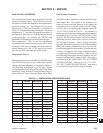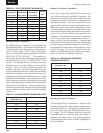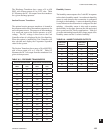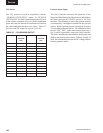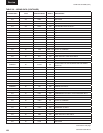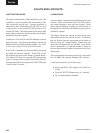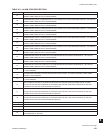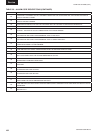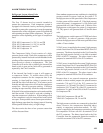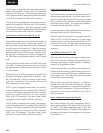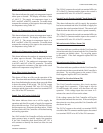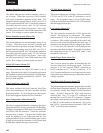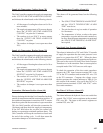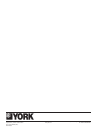
163
JOHNSON CONTROLS
FORM 100.50-NOM6 (1207)
8
ALARM TROUBLE SHOOTING
Refrigerant System Alarm Codes
(01, 02, 03, 04, 09, 10, 11, 12)
The first 12 alarms involve controls intended to
protect the compressors. Each compressor system is
equipped with external circuitry monitoring hardware
intended to protect the compressor in case the operating
characteristics of the refrigerant system fall outside the
safe operating envelope for the compressor. The type of
protection varies depending on the type of compressor
used.
YPAL 050 Compressors 1A, 1B, 2A, and 2B
YPAL 051 Compressors 1A, 1B, 2A, and 2B
YPAL 060 Compressors 1A and 2A
YPAL 061 Compressor 1A
The Compressor Safety Circuit consists of a high-
pressure cutout switch. Each of the compressors is also
protected by internal line break switch imbedded in the
windings of the compressor that protects the compressor
from excessive current or temperatures. The Unit
Controller will not be able to identify the internal line
break switch is open and no fault will be generated or
reported by the Unit Controller.
If the internal line break is open it will appear as
a compressor failure. To trouble shoot verify the
compressor contactor for the compressor that is not
running, is closed and line voltage is present on the
load and line side of all three legs. If so remove power
from the unit and remove the cover from the compressor
control box. Check for an open winding. If all three
winding are open carefully check the compressor shell.
If the shell is hot no determination can be made until the
shell has cooled. If the shell is cool and a winding is
open the compressor is defective. If the windings close
as the compressor cools the internal line break switch
was open. Some possible causes for an open switch are,
high discharge super heat (low charge), start of a bearing
failure (partial locked rotor), or high voltage.
The above units also have a low- pressure cutout that
will be discussed later.
Since tandem compressors are used there is a single high
pressure switch for system 1 and one for system 2. If
the high pressure switch opens both of the compressors
for that system will be turned off. If the high pressure
switch for system 1, (compressors 1A, 1B), opens it will
generate both a 01 and 02 alarm code. Likewise if the
high pressure switch opens for system 2, (compressors
2A, 2B), opens it will generate both a 03 and 04 alarm
code.
The high pressure switch opens at 625 PSIG and closes
at 500 PSIG. In order to generate a high pressure
lockout the high pressure switch must open three times
within a 2 hour window.
24 VAC power is supplied to the system 1 high pressure
switch circuit from wire 399 at terminal HPS1 of the P15
connector. The binary input back to the Unit Controller
from the high pressure switch is wire 400 at terminal
HPS1 of the P15 connector. The above input is then
jumpered to terminal HSP2 of the P15 connector.
24 VAC power is supplied to the system 2 high pressure
switch circuit from wire 431 at terminal HPS3 of the P16
connector. The binary input back to the Unit Controller
from the high pressure switch is wire 432 at terminal
HPS3 of the P16 connector. The above input is then
jumpered to terminal HPS4 of the P16 connector.
Because there is no external compressor protection
module on these models jumpers are placed between
terminals C10 and C10 of the P12 connector for
compressor 1A, C20 and C20 of the P12 connector for
compressor 1B, C30 and C30 of the P12 connector for
compressor 2A, and C40 and C40 of the P12 connector
for compressor 2B.
YPAL 060 Compressors 1B and 2B
YPAL 061 Compressors 1B, 2A and 2B
The high pressure switches are connected as described
above; however, the compressors identified above
employ a compressor protection module. 24 VAC
power is supplied to the compressor protection module
for compressor 1B from wire 441 at terminal C20 of
the P12 connector. The binary input back to the Unit
Controller from the compressor protection module is
wire 440 at terminal C20 of the P12 connector.



